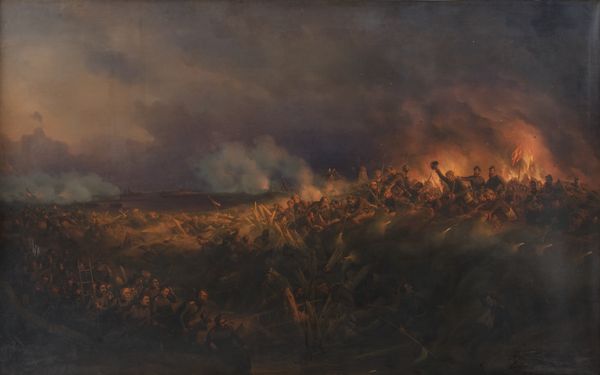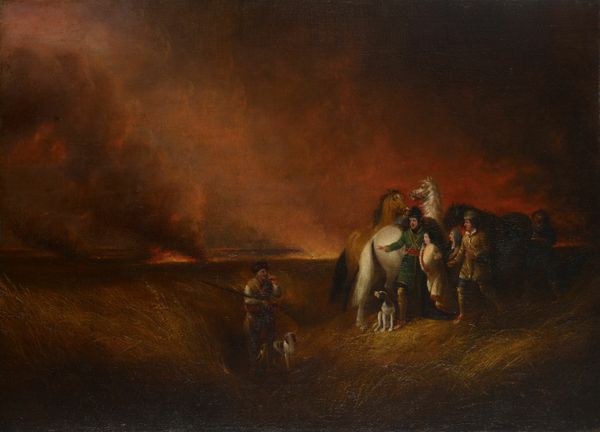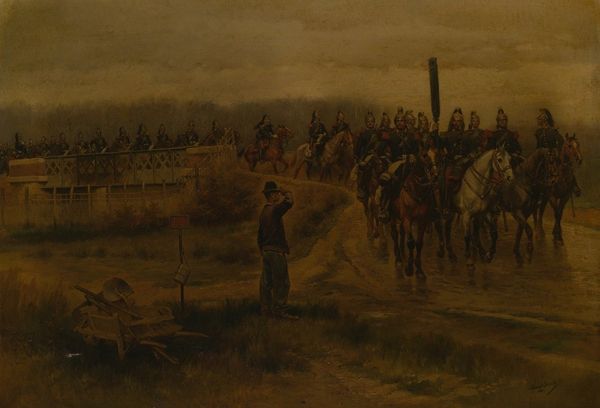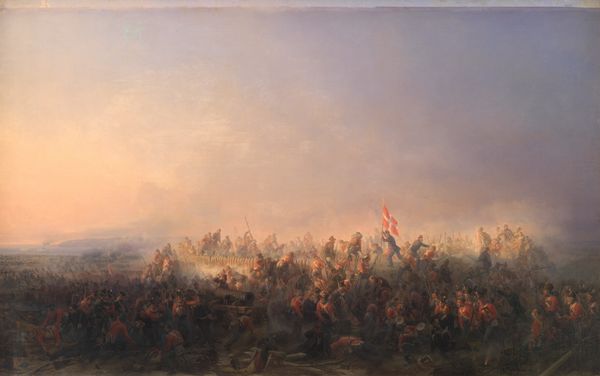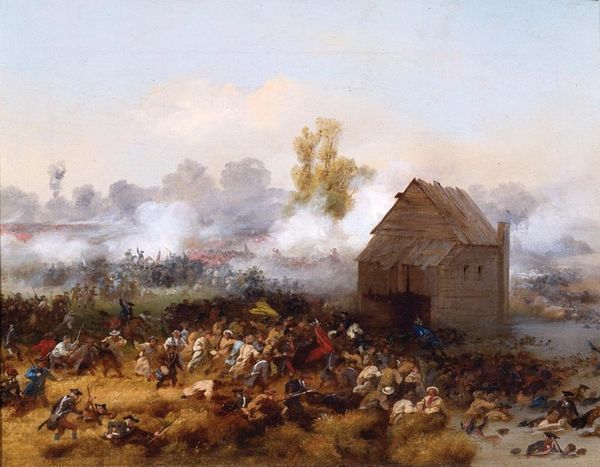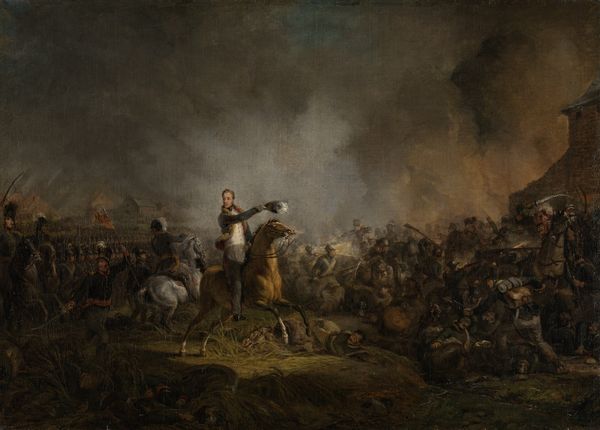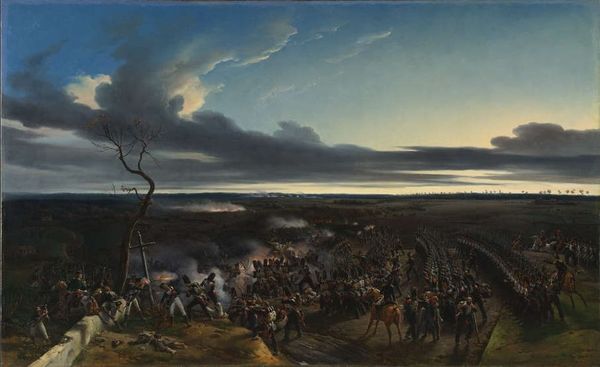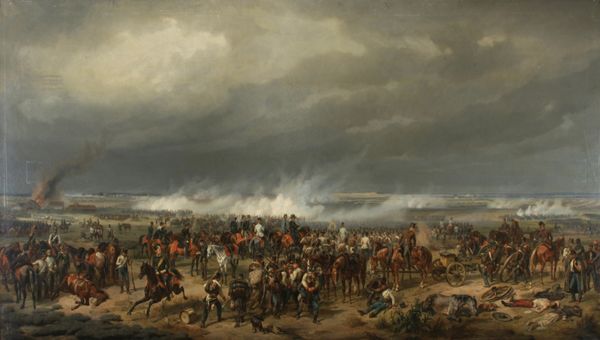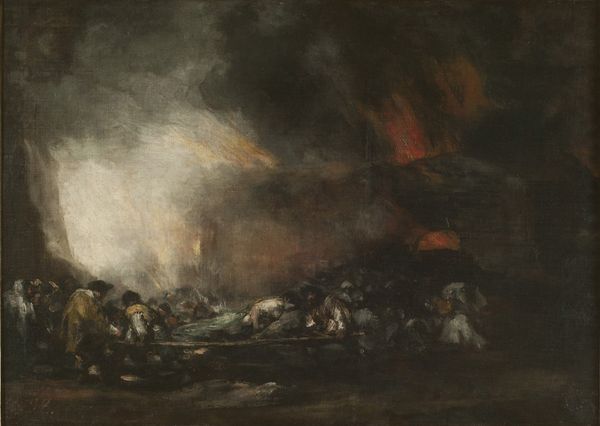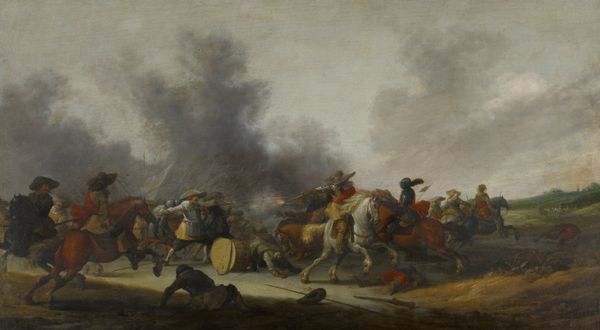
Dimensions: 67.5 cm (height) x 97 cm (width) (Netto), 83.3 cm (height) x 112.6 cm (width) x 8 cm (depth) (Brutto)
Curator: Look at the flames licking at the sky, such a raw depiction of disaster. Editor: Yes, "A Farm on Fire," an oil on canvas attributed to Hans Smidth from sometime between 1854 and 1913, currently held at the SMK - Statens Museum for Kunst. It's a powerfully dramatic scene, isn’t it? Curator: The painting evokes immediate thoughts around socio-economic disparities. Fires, whether accidental or deliberate, disproportionately affect marginalized communities. How did this disaster exacerbate vulnerabilities within the society it depicts? Editor: The composition directs our gaze right into the chaos: we have a blazing farmhouse, silhouetted figures scrambling amidst the inferno, and in the foreground, refugees fleeing by cart. The stark contrast between the light of the fire and the deep shadows underscores the painting's emotional weight. Its creation coincides with the Second Schleswig War...perhaps reflecting societal anxieties about conflict? Curator: Perhaps more than just conflict; this era saw massive shifts in social structure. Smidth would have understood the vulnerability of agrarian communities facing displacement. Is this perhaps commentary on dispossession, on the precarity of rural life under burgeoning industrialization? Editor: The artist chooses to highlight, not heroism, but a somber evacuation. The colors and composition seem to underscore the fragility of existence. But if we situate it in the framework of broader European history paintings of the period, we see depictions of revolution, nationalism, empire. Is it, perhaps, offering an elegiac reflection on the costs of progress? Curator: Precisely. Think about the role of storytelling in the reconstruction of history. Is Smidth prompting the viewer to examine the cost of “progress” through trauma and loss? This moves beyond a purely historical recounting of the event, gesturing instead toward a nuanced socio-political perspective on loss and forced migration. Editor: Yes, it's not simply about documenting a singular tragedy. It pushes us to reflect on how social upheavals affect individual lives, underscoring how even local tragedies are tethered to larger social forces. Curator: By analyzing this work through an intersectional lens, it prompts discussion about the interconnected realities surrounding socio-economic shifts during that time. Editor: Indeed, and as such, “A Farm on Fire” becomes far more than a scene of devastation. It’s a lens through which to understand both past anxieties and perhaps recognize parallels to current realities surrounding climate change, forced migration, and economic disparities.
Comments
No comments
Be the first to comment and join the conversation on the ultimate creative platform.
